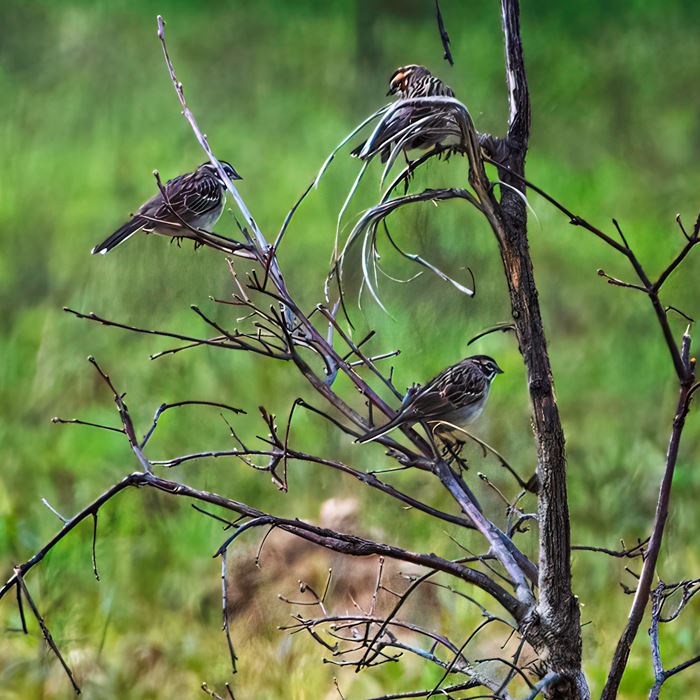Scratching a Habitat’s Surface

By Karen Menard
Prairie and dune habitats in the Oak Openings region provide ideal nesting sites for the state endangered lark sparrow. As a ground nesting bird, this species needs habitat that consists of certain percentages of specific vegetation cover types, organic litter and open sand.
Early this season, Metroparks created sandy openings within many popular lark sparrow breeding sites by removing large patches of sod and other vegetation. This technique created a “scrape” on the ground using a large piece of equipment. The new “scrapes” greatly mimicked the open, sandy areas they seek as part of their specific breeding habitat.
Over time, “scrapes,” will be maintained in order to offer prime lark sparrow habitat. Normal vegetation growth occurs seasonally, covering the naturally open sand barrens that exist nearby.
Monitoring observations that include population numbers and species breeding success at these sites have been valuable in these types of resource management decisions. This year, monitoring showed an increase in birds frequenting the areas that included the scrapes.
Did You Know?
Lark sparrows spend their winter in the semi-arid grasslands of central Mexico where winter temperatures are between 50 and 70 degrees Fahrenheit.
--
Photos by Art Weber
Object reference not set to an instance of an object.